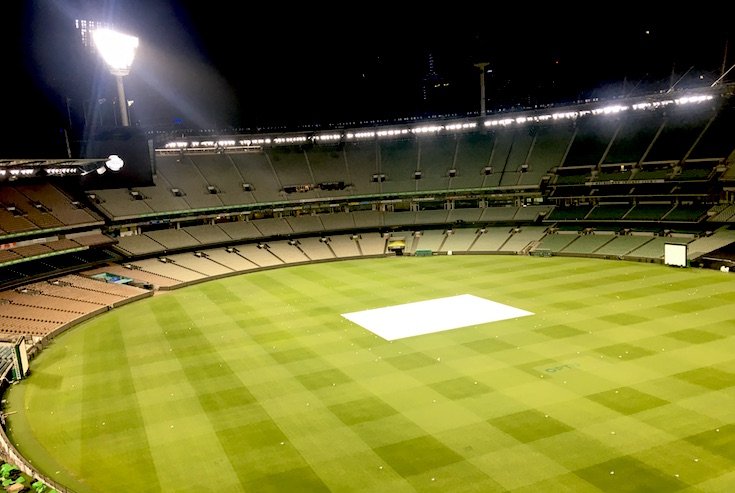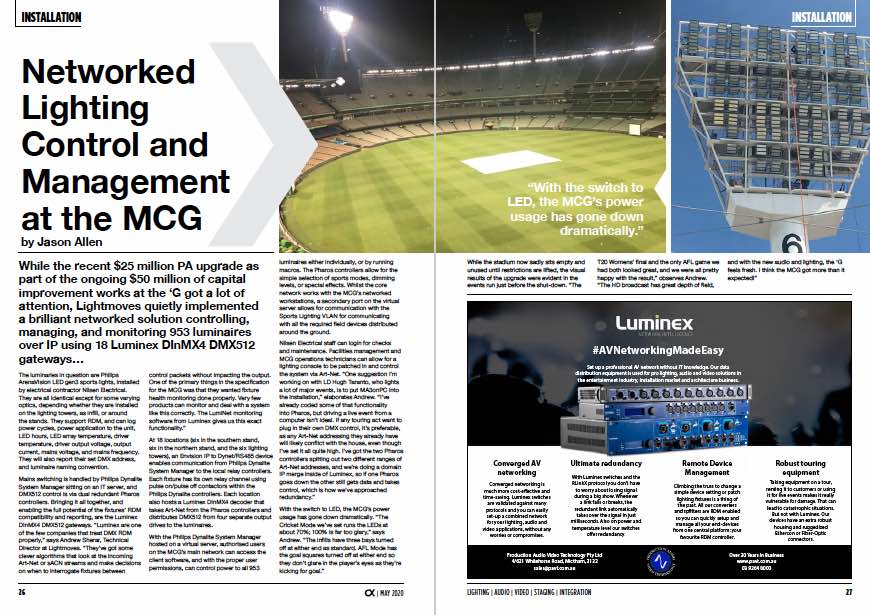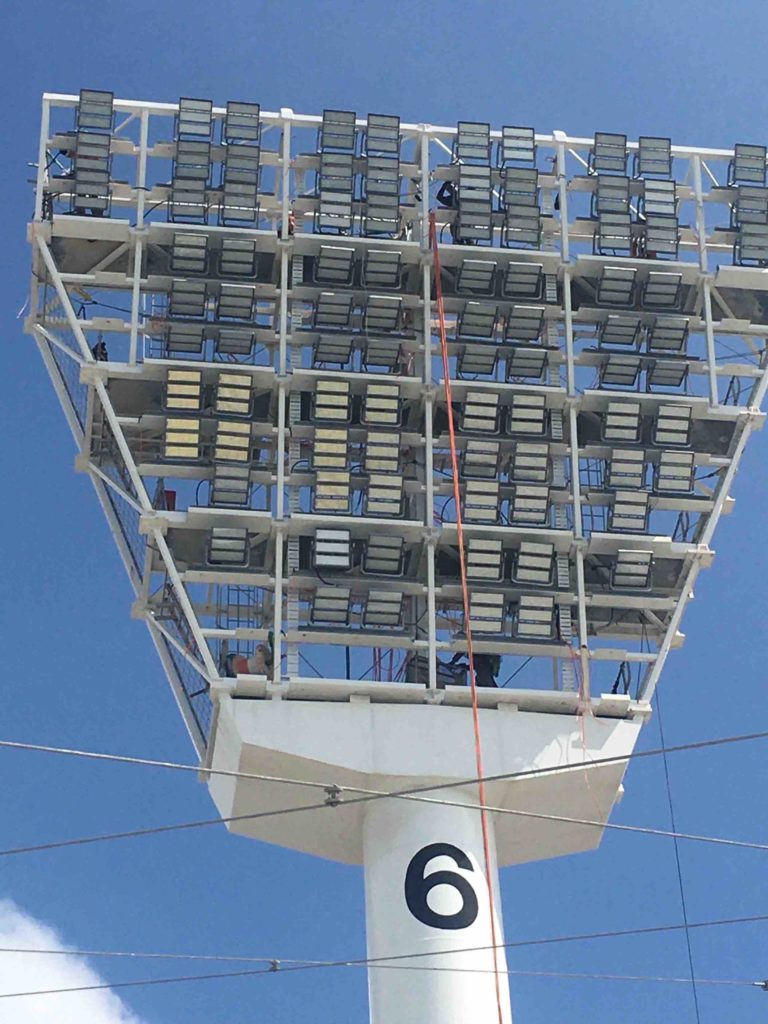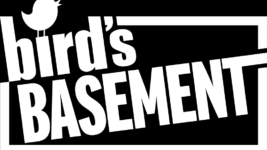News
20 May 2020
Networked Lighting Control and Management at the MCG

Subscribe to CX E-News
While the recent $25 million PA upgrade as part of the ongoing $50 million of capital improvement works at the ‘G’ got a lot of attention, Lightmoves quietly implemented a brilliant networked solution controlling, managing, and monitoring 953 luminaires over IP using 18 Luminex DinMX4 DMX512 gateways…
The luminaries in question are Philips ArenaVision LED gen3 sports lights, installed by electrical contractor Nilsen Electrical.
They are all identical except for some varying optics, depending whether they are installed on the lighting towers, as infill, or around the stands.
They support RDM, and can log power cycles, power application to the unit, LED hours, LED array temperature, driver temperature, driver output voltage, output current, mains voltage, and mains frequency.
They will also report their set DMX address, and luminaire naming convention.
Mains switching is handled by Philips Dynalite System Manager sitting on an IT server, and DMX512 control is via dual redundant Pharos controllers. Bringing it all together, and enabling the full potential of the fixtures’ RDM compatibility and reporting, are the Luminex DinMX4 DMX512 gateways.
“Luminex are one of the few companies that treat DMX RDM properly,” says Andrew Sherar, Technical Director at Lightmoves.
“They’ve got some clever algorithms that look at the incoming Art-Net or sACN streams and make decisions on when to interrogate fixtures between control packets without impacting the output.
“One of the primary things in the specification for the MCG was that they wanted fixture health monitoring done properly. Very few products can monitor and deal with a system like this correctly. The LumiNet monitoring software from Luminex gives us this exact functionality.”
At 18 locations (six in the southern stand, six in the northern stand, and the six lighting towers), an Envision IP to Dynet/RS485 device enables communication from Philips Dynalite System Manager to the local relay controllers.
Each fixture has its own relay channel using pulse on/pulse off contactors within the Philips Dynalite controllers. Each location also hosts a Luminex DinMX4 decoder that takes Art-Net from the Pharos controllers and distributes DMX512 from four separate output drives to the luminaires.
With the Philips Dynalite System Manager hosted on a virtual server, authorised users on the MCG’s main network can access the client software, and with the proper user permissions, can control power to all 953 luminaires either individually, or by running macros.
The Pharos controllers allow for the simple selection of sports modes, dimming levels, or special effects.
Whilst the core network works with the MCG’s networked workstations, a secondary port on the virtual server allows for communication with the Sports Lighting VLAN for communicating with all the required field devices distributed around the ground.
Nilsen Electrical staff can login for checks and maintenance. Facilities management and MCG operations technicians can allow for a lighting console to be patched in and control the system via Art-Net.
“One suggestion I’m working on with LD Hugh Taranto, who lights a lot of major events, is to put MA3onPC into the installation,” elaborates Andrew.
“I’ve already coded some of that functionality into Pharos, but driving a live event from a computer isn’t ideal.
“If any touring act want to plug in their own DMX control, it’s preferable, as any Art-Net addressing they already have will likely conflict with the house, even though I’ve set it all quite high.
“I’ve got the two Pharos controllers spitting out two different ranges of Art-Net addresses, and we’re doing a domain IP merge inside of Luminex, so if one Pharos goes down the other still gets data and takes control, which is how we’ve approached redundancy.”
With the switch to LED, the MCG’s power usage has gone down dramatically. “The Cricket Mode we’ve set runs the LEDs at about 70%; 100% is far too glary,” says Andrew.
“The infills have three bays turned off at either end as standard. AFL Mode has the goal squares turned off at either end so they don’t glare in the player’s eyes as they’re kicking for goal.”
While the stadium now sadly sits empty and unused until restrictions are lifted, the visual results of the upgrade were evident in the events run just before the shut-down.
“The T20 Womens’ final and the only AFL game we had both looked great, and we were all pretty happy with the result,” observes Andrew.
“The HD broadcast has great depth of field, and with the new audio and lighting, the ‘G’ feels fresh. I think the MCG got more than it expected!”
CX Magazine – May 2020
LIGHTING | AUDIO | VIDEO | STAGING | INTEGRATION

Entertainment technology news and issues for Australia and New Zealand
– in print and free online www.cxnetwork.com.au
© VCS Creative Publishing
Subscribe
Published monthly since 1991, our famous AV industry magazine is free for download or pay for print. Subscribers also receive CX News, our free weekly email with the latest industry news and jobs.








